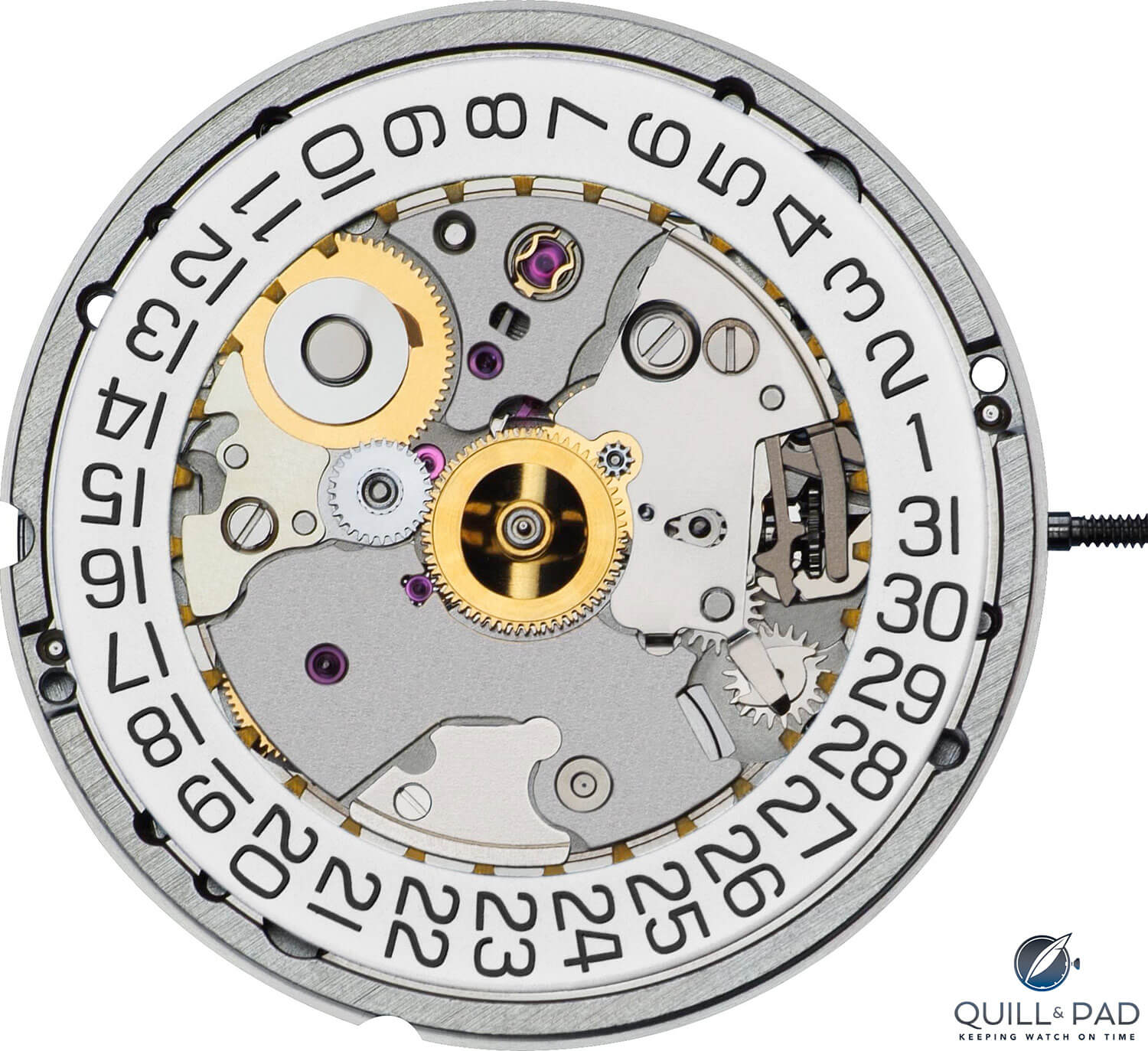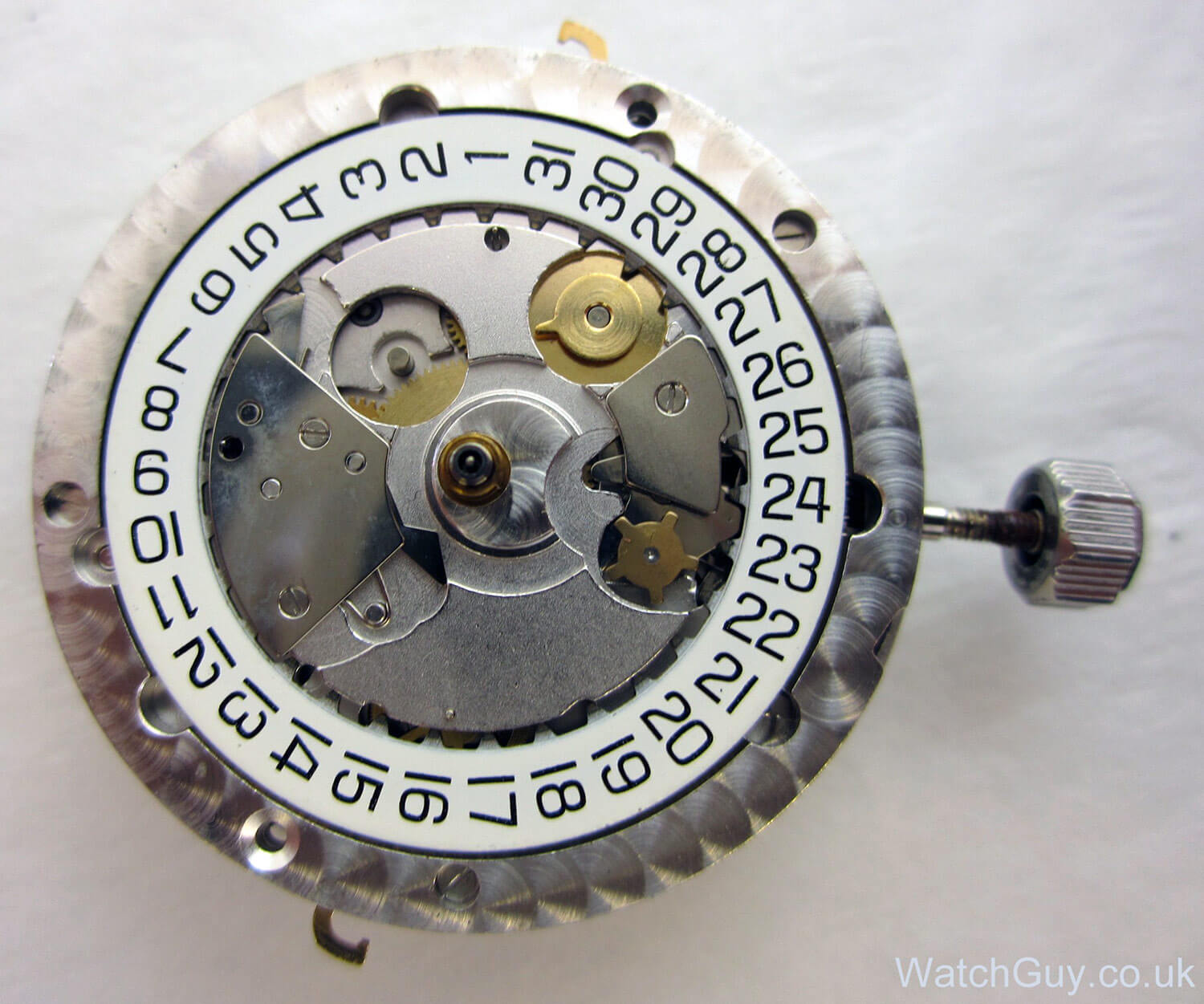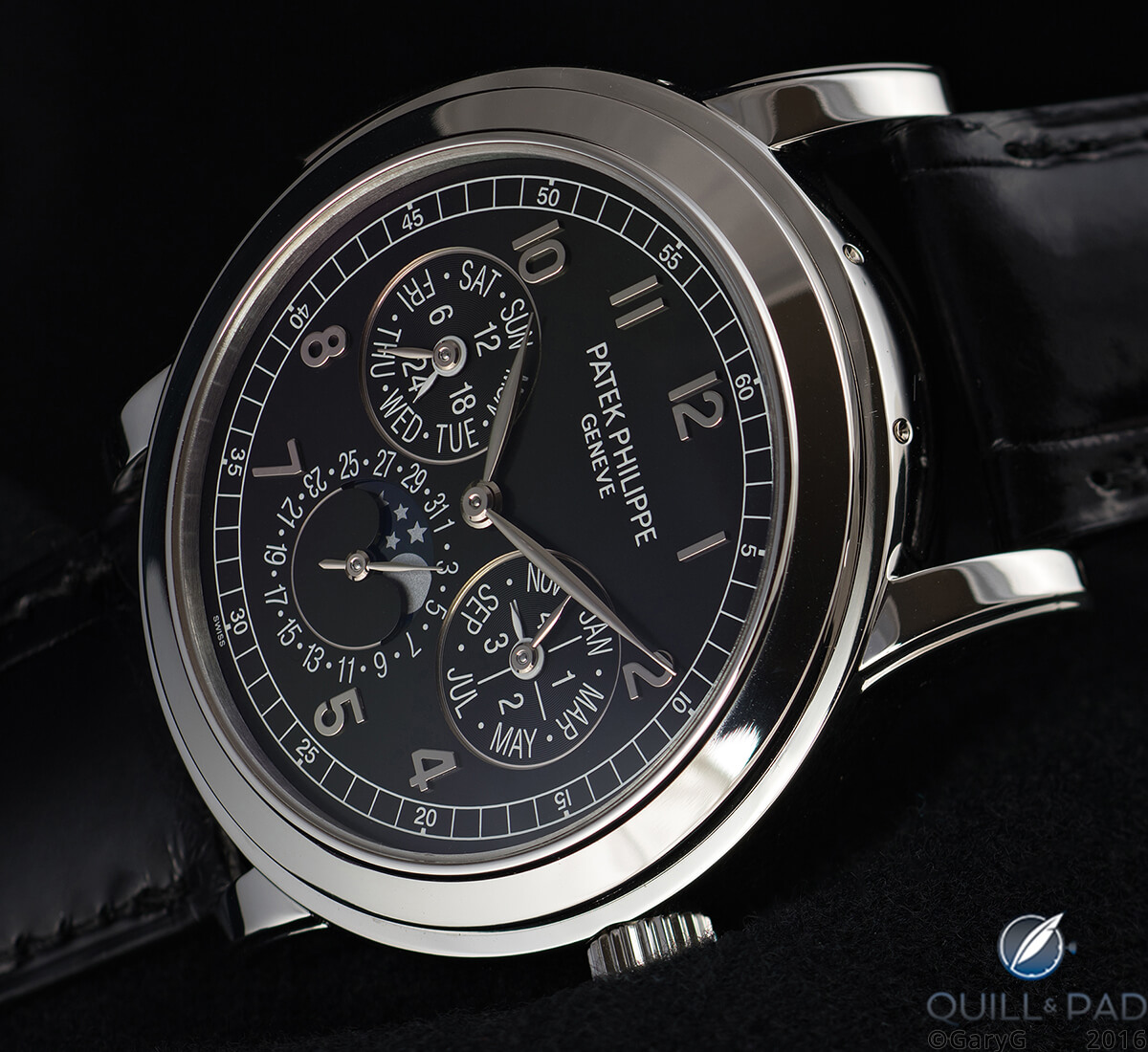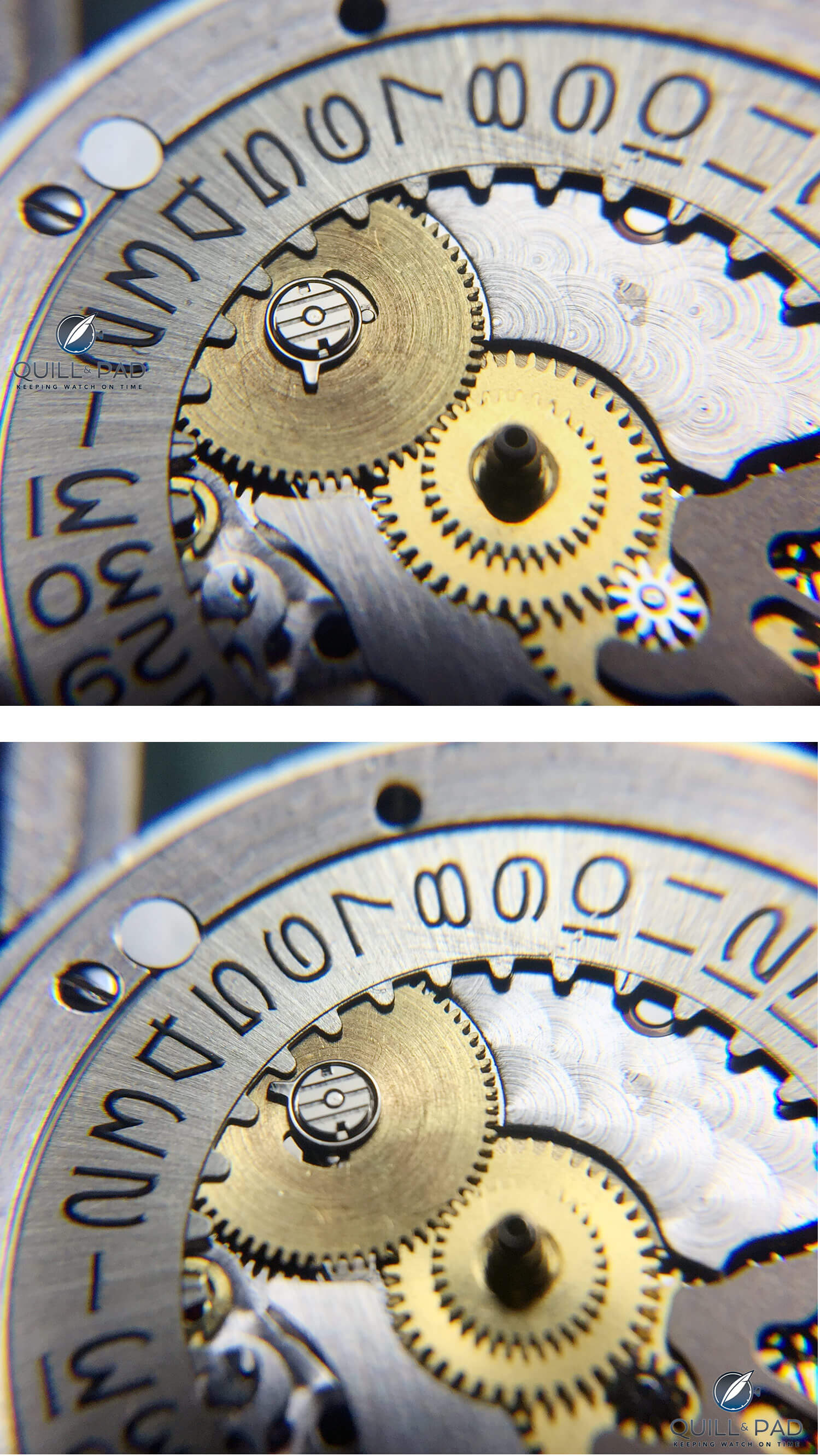It’s A Date! Taking A Closer Look At The Most Popular Complication Of Them All: The Calendar
Date windows on wristwatches can be a touchy subject among watch aficionados.
Many feel they are downright ugly and destroy the look of a good watch, whereas others swear by them as the most useful and affordable complication.
Whatever camp you may find yourself in, this calendar function can be the cause of considerable grief, particularly the rapid set mechanism.
The calendar was introduced in wristwatches at the beginning of the twentieth century, but that date by no means marked the inception of the complication. Astronomical watches dating back to the seventeenth century were equipped with complex calendar functions displaying a gaggle of information.
Since its invention, calendar complications in wristwatches has improved exponentially from simple watches displaying just the date right up to incredibly complex perpetual calendars – and everything in between.
Rapid date change
One of the most useful upgrades the humble calendar has received would have to be the rapid-date or quick-set change mechanism. Before the rapid set was added, correcting the date was an arduous process that took considerable time. If you are a vintage watch enthusiast you will be all too familiar with the boring process of having to advance the hands until the right date appears.
Along with the introduction of the rapid-set corrector came another problem: the delicate gearing could become damaged if engaged when the time shown on the watch was close to midnight.
I’m confident most of you will have heard that we shouldn’t use our rapid-date change function between the hours of 10:00 pm and 2:00 am so as to avoid damage.
But, is that the whole story? Not exactly, so let’s examine in more detail.
Watches with a quick-set mechanism fall into two camps: one that has a safety device and one that does not. But before we delve into the mechanics of the safety device, we must first understand how different calendars function.
There are three main types of calendars: direct drive, semi-instantaneous, and instantaneous.
Direct-drive calendar
The direct-drive calendar is the most obscure and primitive date design, and it is rarely seen in movements today. This style of mechanism makes no use of a date “jumper,” relying instead on the 24-hour wheel and another pinion to engage the teeth of the date disk.
The date disk is in constant engagement with the pinion, meaning there is no definitive “jump” of the date from one day to the next at midnight. It simply makes its way around the dial and changes in a sweeping motion around midnight.
Semi-instantaneous calendar
This style of date change is much more common and seen mostly today in watches like the ETA 2892 and ETA Valjoux 7750.

ETA 2892
It makes use of a date “jumper,” which controls when the date numeral will make its jump. This style is more secure as it doesn’t rely on geared teeth to mesh, but rather a pointed steel jumper between two teeth. It allows for no error.

ETA Valjoux 7750 with date ring (photo courtesy WatchGuy.co.uk)
Close to midnight, the 24 hour wheel, which has a mounted finger, will start to engage one tooth of the date disk. As the wheel makes its way further around, the spring-loaded jumper starts to drag over the tip of the tooth on the date wheel. As it passes the point of no return it is forced to snap down in between the next two teeth of the disk, allowing the calendar disk to be displayed in the correct position on the dial.
Instantaneous calendar
The instantaneous style is the most sophisticated of the three as it allows date change to take place exactly at midnight.
It uses a spring to accumulate energy over a period of time and then releases that energy at midnight, causing an abrupt snap that advances the date disk one tooth forward.
Rapid date change: the mechanics
The rapid-date change can be categorized into two camps, then boiled down further into two more subcategories.
The first is a mechanism that uses an independent corrector, usually on the side of the case. The second is a style that is incorporated into the winding stem.
The two sub-categories that follow are those with a safety device and those without.
Rapid-date change corrector
Rapid-date change correctors are usually found in complicated watches that display more than just the date. They are commonly seen in triple calendar movements, but really any watch can make use of one.

Two calendar correctors are visible between the lugs of this Patek Philippe Reference 5074P
Easily recognized as a small push piece on the outside of the case, correctors are very simple mechanisms to repair and operate. You simply press the corrector downward and the date advances one increment. The push piece will then spring back once depressed, ready to perform its service all over again.
The push piece itself is connected to a lever inside the movement, which in turn acts against a toothed star wheel that advances one tooth forward. The star wheel can either have the hand directly attached to its arbor or it can transfer power to another wheel down the line.
Winding stem
Rapid-date change via the stem is arguably the more common variety as it is found within most sports watches today. It is popular among that style because it does not require another entry point into the case, which can be a weakness for water resistance.
The most common style involves pulling the crown out to the first position after winding and turning the crown one way to cycle through the date. There are styles that involve rapid cycle in both directions and others still that are spring loaded and don’t require turning at all; with the latter, pulling the stem into position is enough.
The most common, as stated, is the former. When the crown is turned in this position, a wheel is engaged that in turn engages another wheel. That wheel then makes contact with the tooth of the calendar disk, which advances the date one number forward.

A closeup on the date-change mechanism (photo courtesy Ashton Tracy)
Calendar safety device
Every 24 hours the date advances one number forward, but that process begins well before midnight.
We previously spoke about the 24-hour wheel with a mounted finger; that finger is what advances the date forward by pushing a tooth on the calendar disk and allowing it to advance.
As the time leads up to midnight, that finger is situated between two teeth on the calendar disk. If the date were to be advanced via a rapid set at this point, the tooth of the calendar wheel would be pushed into that date finger, likely causing damage that the watch may not be able to recover from without intervention.
To avoid this happening certain watches are fitted with a safety device. Watches with a winding-stem rapid set usually use a spring-loaded finger mounted on the 24-hour wheel. When the rapid-set function is engaged, the finger is merely pushed out of the way and returns to its original position once the date disk tooth is clear.
Watches outfitted with a push-piece rapid set work a little differently using a movable finger that is mounted on a date-driving wheel. This style uses a spring to push that finger out of the way when the corrector is used.
Conclusion
While there is some truth to the claim that a rapid date change shouldn’t be made between 10:00 and 2:00, it certainly doesn’t tell the whole story.
One thing is abundantly clear: always follow the manufacturer’s instructions as not doing so can be a costly mistake.
* This article was first published on June 10, 2018 at It’s A Date! Taking A Closer Look At The Most Popular Complication Of Them All: The Calendar.
You may also enjoy:
Annual Calendars Are Goldilocks Complications: Not Too Hot, Not Too Cold, Just Right
Vintage Eberhard & Co. Les Quantièmes: A Complete Calendar At A (Relatively) Affordable Price
Graff MasterGraff Perpetual Calendar: Technically Fabulous Even Without The Sparkles
Extremely Funky Minimalism: H. Moser & Cie Endeavour Perpetual Calendar Concept



Leave a Reply
Want to join the discussion?Feel free to contribute!